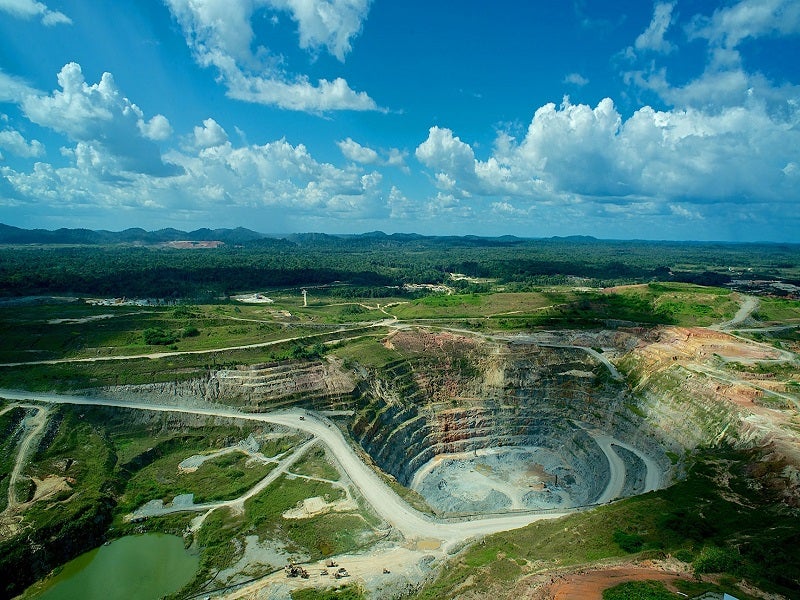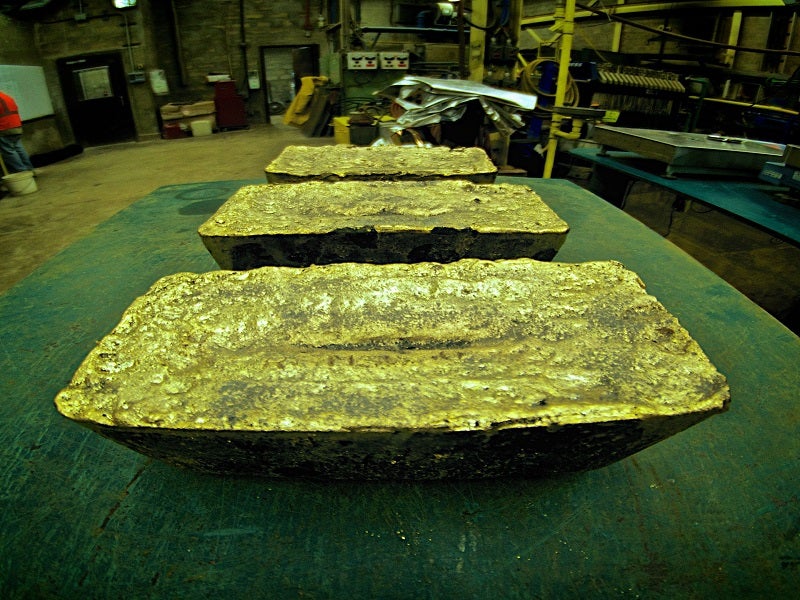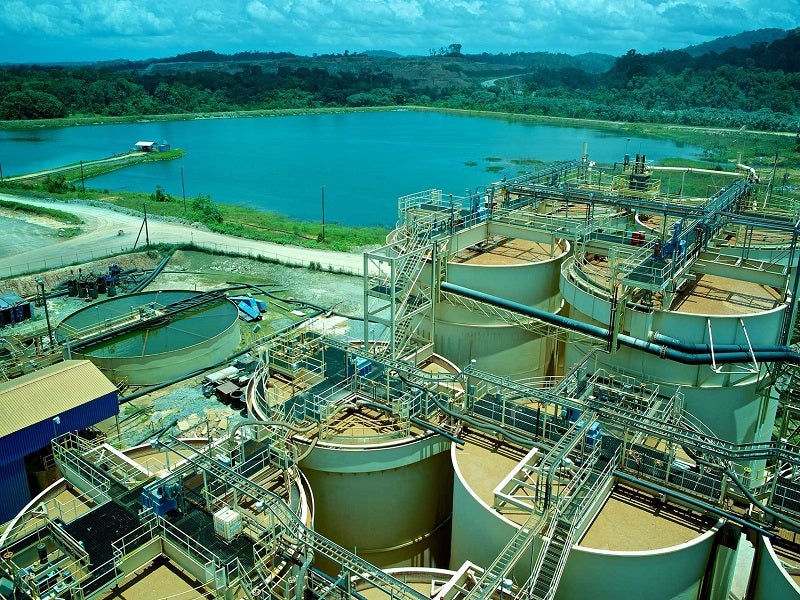The Rosebel gold project in northern Suriname is one of the largest gold-producing mines in South America.
The mine was earlier owned by gold mining company IAMGOLD (IMG) (95%) through Rosebel Gold Mines (RGM), with the Republic of Suriname owning the remaining 5%.
Chinese mining company Zijin Mining and IMG entered a share purchase agreement in October 2022, under which the former purchased a 95% stake in RGM for $360m. The transaction was completed in February 2023.
The Rosebel gold project commenced gold production in February 2004 and produced 5.65Moz of Au from 2004 to 2021. IMG announced the Rosebel 2022 life of mine plan (LOMP) in 2021, which is aimed at extending the mine life and expanding its processing capacity. A technical report for the same was released in August 2022.
The mine’s processing equipment is currently being upgraded as part of the 2022 LOMP plan and is anticipated to be completed in the second half of 2023.
Location of the Rosebel project
The Rosebel gold mine is located in the mineral-rich Brokopondo region of northeastern Suriname.
The property is located approximately 85km south of Paramaribo, the capital city of Suriname, and spans across 170km2 bordering the Suriname River to the east, the Saramacca River to the west, and the Brokopondo reserve to the south.
Geology and mineralisation of Rosebel
Rosebel lies within a Paleoproterozoic Guiana Shield greenstone belt that stretches from the Amazon River in Brazil to the Orinoco River in Venezuela.
The volcano-sedimentary sequence of the Marowijne Supergroup and the underlying detrital sedimentary sequence of the Rosebel Formation host the Rosebel deposits.
The producing deposits at the mine include Royal Hill, Mayo, Rosebel, Koolhoven-J Zone, Pay Caro, and East Pay Caro.
Sedimentary and volcanic rocks are the primary hosts of gold mineralisation, which is structurally controlled and resembles orogenic gold deposits hosted by greenstones in terms of their geology, structure, and metallogenic characteristics.
The gold mineralisation is mainly composed of tension and shear vein associations of quartz and carbonate.
Reserves of the Rosebel gold mine
The Rosebel gold mine has proven and probable mineral reserves of 86.8Mt grading 0.9g/t of Au containing 2,595koz Au.
Mining at the Suriname-based gold project
The Rosebel operation uses open-pit mining methods comprising the standard drill and blast, truck and shovel operations. It has an owner-operated fleet and uses contractors to support it with ancillary duties.
The mine loading fleet includes a CAT 993 loader for run-of-mine (ROM) stockpile reclaiming, two Caterpillar (CAT) 6020 shovels, and five Caterpillar (CAT) 6030 shovels that can operate in both the excavator and front shovel configuration.
The hauling fleet comprises 35 CAT 777 haul trucks, as well as 18 CAT 785 haul trucks. In addition, seven CAT 777 water trucks are used to control the dust. Ancillary equipment includes fuel trucks, mobile light plants, and service trucks.
The property has a remaining mine life of 12 years and is expected to produce an average rate of 2.77Moz of gold a year, ramping up to more than 3Moz in 2025, with a total predicted production of 3.32Moz of gold according to the 2022 LOMP.
A period of increased stripping is expected to boost the mining rate from 59Mtpa in 2022 to 64Mtpa by 2026.
The mining rate will increase to 73Mtpa starting in 2027 with more loading and hauling units and will begin to drop as pits are mined out starting in 2031.
Processing plant upgrade
The processing plant at the Rosebel mine utilises a conventional cyanidation process to treat ROM ore. The ROM material is crushed using a conventional gyratory crusher followed by a secondary crusher in an open circuit. It is then processed in a semi-autogenous (SAG)-ball milling comminution circuit followed by gravity, carbon-in-leach (CIL) and carbon handling circuits to produce doré.
A new plant throughput model was proposed under the 2022 LOMP to increase the processing rate to 7.7Mtpa of hard rock equivalent. The modifications that will be made to the processing plant include the replacement of the existing secondary grizzly with an MF3061-2 double-deck multi-slope (Banana) screen and the replacement of the current secondary cone crusher with an MP800 cone crusher.
The existing pebble crusher will also be replaced with an HP900 cone crusher and the existing 2.13m x 4.88m gravity screens with 2.4m x 6.1m screens to improve the gravity feed capacity. Additionally, the existing BM#3 discharge static screen will be replaced with a trommel screen.
Infrastructure
The property is located 110km away from Paramaribo and accessible through paved and all-weather gravel roads. A small airstrip is situated nearby, about 2km from the mill operations. The distance between Rosebel and Zanderij International Airport is approximately 60km.
Rosebel gets its power from a diesel power plant and the adjacent Afobaka hydropower generating unit. Power purchase agreements were made with the Surinamese government and a parastatal energy provider.
IMG constructed a 5MW solar power facility at the mine that was put into service in June 2016.
The necessary water supply for the project is obtained from the Mindrineti River via the mining site roadways.
The Rosebel campsite has 1,253 single and double rooms, with a capacity to accommodate 2,300 people.
Contractors involved
The technical report for the 2022 LOMP was prepared by representatives of IMG, and consulting firms WSP Canada and SRK Consulting.
Lycopodium, an engineering consulting services provider, designed the processing circuit as part of the 2022 LOMP.
Canadian engineering solutions provider BBA worked with a third-party consulting firm to implement the 2017 LOMP for the project.
Portable power generator manufacturer Grupel supplied a generator with a Baudouin engine and a Leroy-Somer alternator to the mine.
Construction contracting company CCC H. Pansa & Sons was contracted by RGM to provide qualified and certified personnel for civil works and construction in 2019.
ARNO Group, a construction company, refurbished a 161kV line for the Rosebel gold mine in 2010.






